| Have I spoiled Shana? In some ways, I have definitely spoiled Shana. Shana is a hard worker and a good dog, but some of that spoiling is what holds her back now from being relaxed in a city like Boston. I had really never thought we would take a Boston trip in Shana's lifetime. The fall vacation is far enough away, that all I need to do is prepare her. |
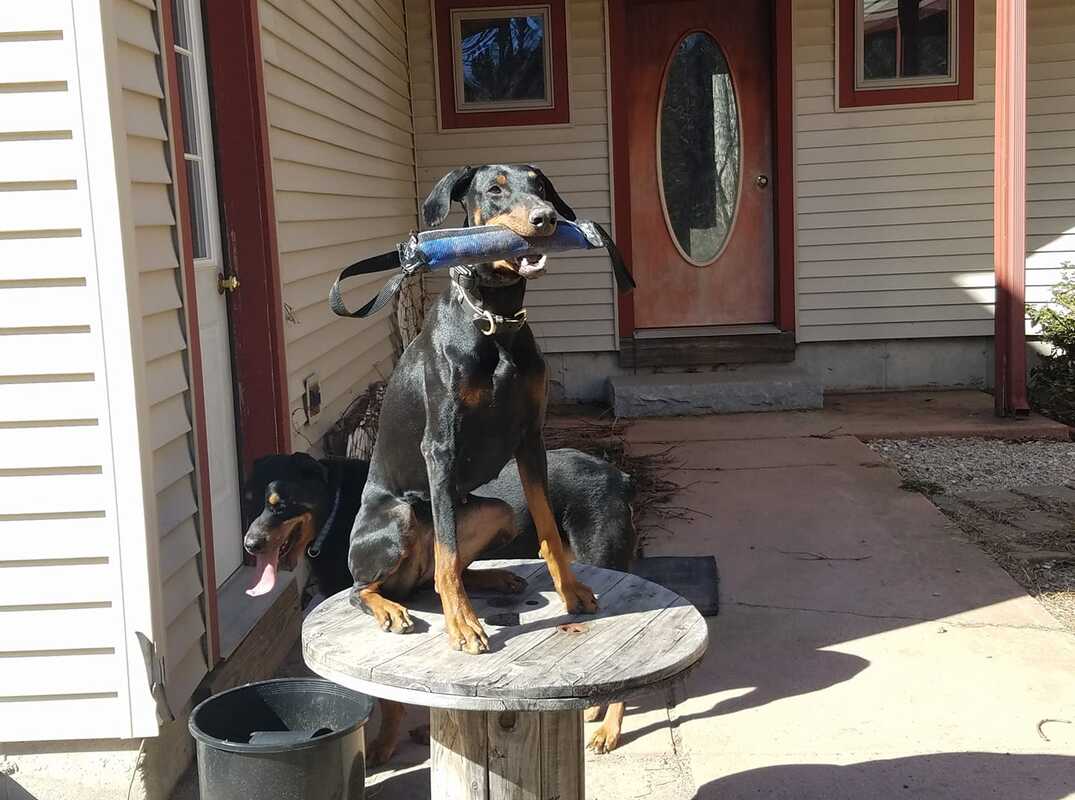 In 2011 I came across a YouTube video of a trainer, Mike Ellis, who is a well known sports dog trainer. I hadn't heard of him, as he wasn't a fixture in pet dog training or AKC obedience. What he was doing absolutely blew me away, and he was having a seminar in RI the next week. I paid the very reasonable price to attend with a non working or audit spot (means you don't bring a dog to work and be coached), as all the working spots were filled. The seminar was called "Focus and Drive". This was the beginning of my play training journey. I am going to do a series on play training on this blog for the next few weeks (or more). On Sundays, I am going to try to blog and post (on our Facebook page) Shana's training progress. Normally I am training Shana because:
This fall though, we are taking a trip to Boston, and staying in a very fun dog friendly hotel across from Fenway Park. Shana has only been to a city a few times in her life. City distractions are very different than the distractions she sees in a small town (and some of those still can scare her or put her on defense drive). So now I have a specific goal that I am training for. 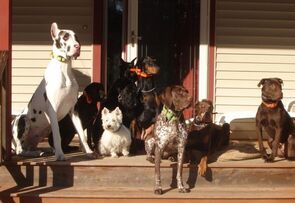 Avoidance behaviors in dogs are simply a step towards the end result of practiced impulse control and behavioral modification. Some dogs will not even seem to take this step, and usually that is become they are confident with an even temperament. An example of avoidance behavior is a dog that looks in the opposite direction from a dog they would like to bark at. Avoidance is simply the step taken to practice impulse control over a trigger that used to make them react, hide from, or leave the area entirely.  Shana training on a long line or 15' to 20' leash. Shana training on a long line or 15' to 20' leash. Leashes are a dog's safety net and life line for much of their lives. Many public places are bound by the leash laws of their municipal government. Also, if your property does not have a fence and they are not off leash trained, generally if your dog leaves your property then YOU have probably violated a leash law. Many owners hold the leash casually, in a way that can harm the human, and in a way that can cause the dog to be free where they should not be and where it is dangerous. The topic of our blog today, is the best ways to hold a leash for the safety of both the dog and the dog owner. 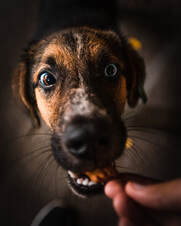
Today I am going to go over the very commonly used practices of treat training used with luring to train your dog. Most of this training falls under the category of positive reinforcement. That is the practice of adding something to increase the likely hood of a behavior. In this case, we are talking about food rewards.
CONSIDERATIONS WHEN TRAINING WITH FOOD: Most puppy training starts with food training. Puppies are maturing, and do not have the focus of an adult dog. They are discovering the world with their paws, nose, eyes, and mouth. Therefore, humans need a good reward method to catch their attention for any period of time. Adult dogs will have more maturity and focus (usually). Therefore, the first section does not necessarily apply to them. Although, these are things you may want to consider, especially if your adult dog seems at all flat when training. Both young and old dogs need a distraction free place to start learning at first. 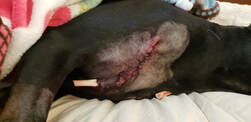 Shana has 40 stitches, four serious wounds, and 3 drains after surgery. She also has three types of antibiotics and one pain pill. Shana has 40 stitches, four serious wounds, and 3 drains after surgery. She also has three types of antibiotics and one pain pill. This is going to begin a series as best as I can. I don't know how many parts are going to be to it, but I am going to continue a Shana journal from now on. I have attempted this before, and it has not been consistent. This, however, is an topic most dog owners and dog trainers have not had the opportunity to cover. Although, I can later share some blogs that do go over interesting things in a dog/owner or dog/trainer relationship over time. CLICK ON THIS FOR PAST SHANA POSTS NOTE1: WE KEEP TRACK OF INCIDENTS HERE OF ALL SORTS. WE HAVE ONCE EVER HAD DOG SERIOUSLY HAVE AN INTENT TO KILL, AS I CONSIDER THIS. APPROPRIATE STEPS WERE PUT IN PLACE IMMEDIATELY AFTER THAT PREVIOUS INTERACTION. Now the band-Aid is ripping off. Trigger warnings may abound if you have ever been in a dire emergency situation. NOTE2: THIS IS NOT HOW TO GO ABOUT A DIRE EMERGENCY DOG FIGHT SITUATION. DO NOT USE THIS AS A HOW TO. THIS IS NOT A HOW TOO, BUT A MOMENT IN TIME OF DESPERATION. Wednesday September 8th 2021: The day started out (7:30 am) normal though there have been some things going on here as in everyday life. Nothing too abnormal though... 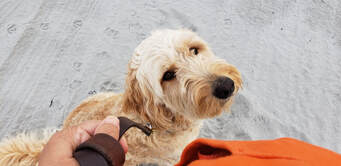 Dog owners tend to wince at the suggestion of using a correction. So many dog owners associate the word "correction" in dog training with punishment or treating their dog harshly. This is not what is meant by most dog trainers or dog sports enthusiasts. My definition of a dog training correction is to further advance a position, speed, or behavior through communication the dog understands to mean what they had just done is not what was wanted and therefore offers another option or stops something. Some examples of corrections are verbal markers, spatial pressure, and the use of some training equipment. Please note that corrections should not be used, generally speaking, until the dog has started and advanced through the first stages of dog training, which is teaching. Once a performance can be reliably predicted to a standard, then you are ready to correct errors or non performance. 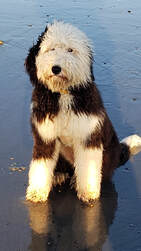 Izzie is our model for this blog. Izzie is our model for this blog. The ability to teach dog training commands that are later on reliable and functional depends upon how the ability to break them up into steps and then layer onto them different environments and distractions. This is also true when you are modifying your dog's behavior or changing your dog's perception of things that might make them defensive or scared. Many dog owners are not aware that going slower and methodically is going to give them a much better chance of reaching their dog training or behavior modification goals with their dogs. Dogs neither understand English nor read minds. It is the dog owner's and trainer's job to break commands down into parts which can be taught well, and then advance the command by increasing things like the three Ds (duration, distance and distraction), which was discussed in our previous blog post. Many dog owners, who have trained their dogs, do not realize the tools for working on many dog behaviors that are problems to us are the training commands themselves. The ability to use these commands repetitively in different situations can help build the types of reactions that dog owners prefer from their dogs in many situations.
|
Author, Robin RubinOwner and Head Dog Trainer in Maine, Robin Katherine Rubin, started her Maine dog training business in September 2004. Our dog training facility is located in Southern Maine in York Beach and we help families enjoy their dogs more, making sure they listen reliably and resolving unwanted behaviors. Archives
February 2024
Categories
All
|
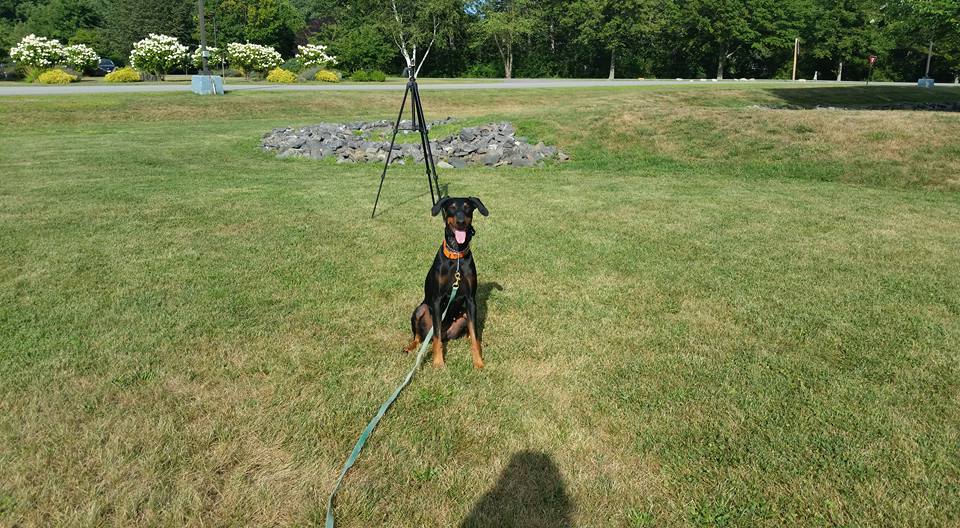
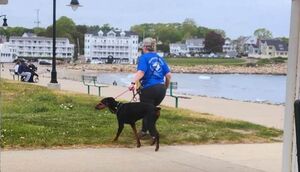
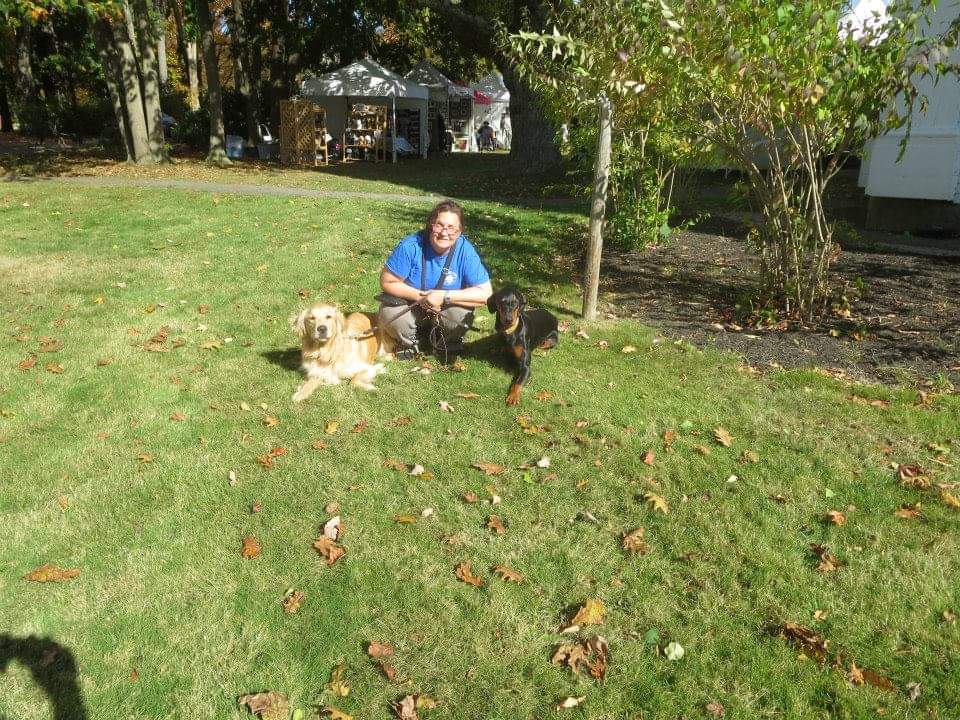
 RSS Feed
RSS Feed